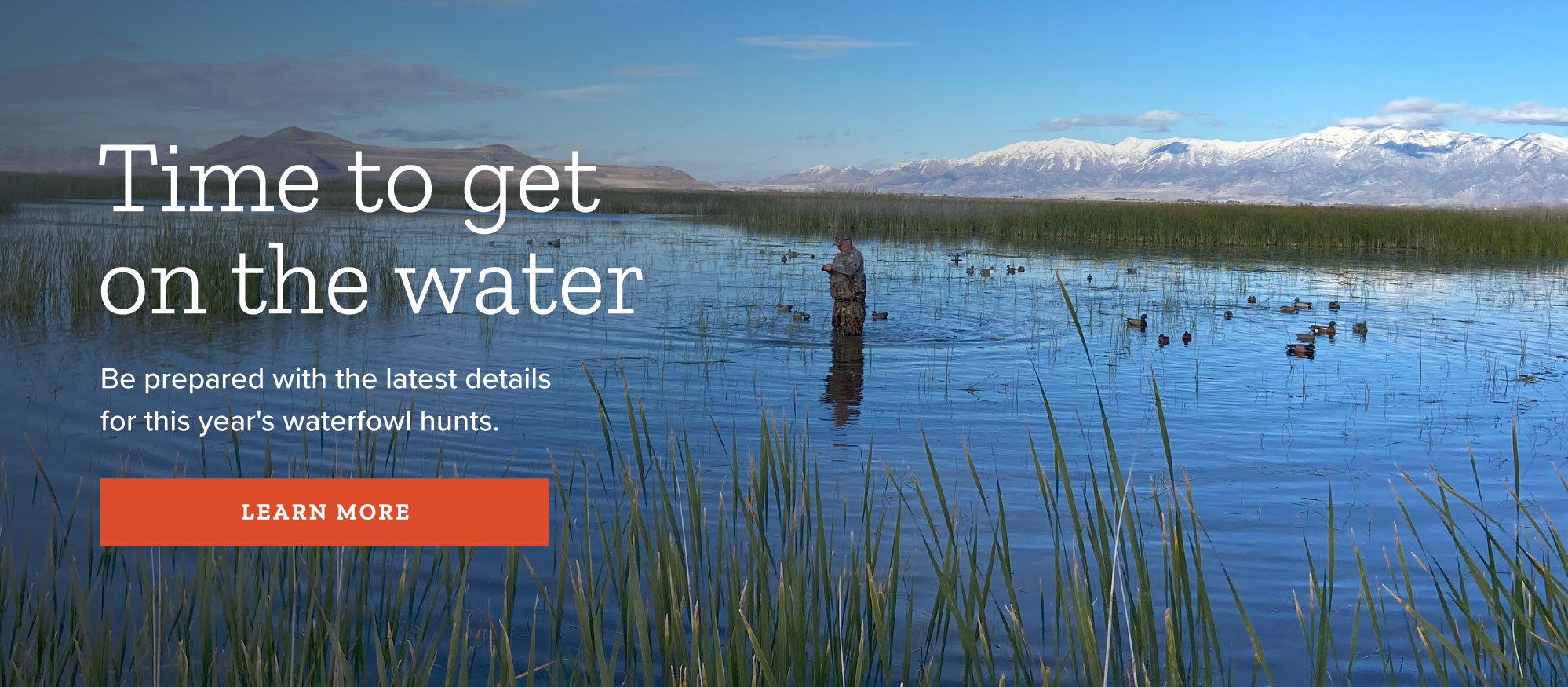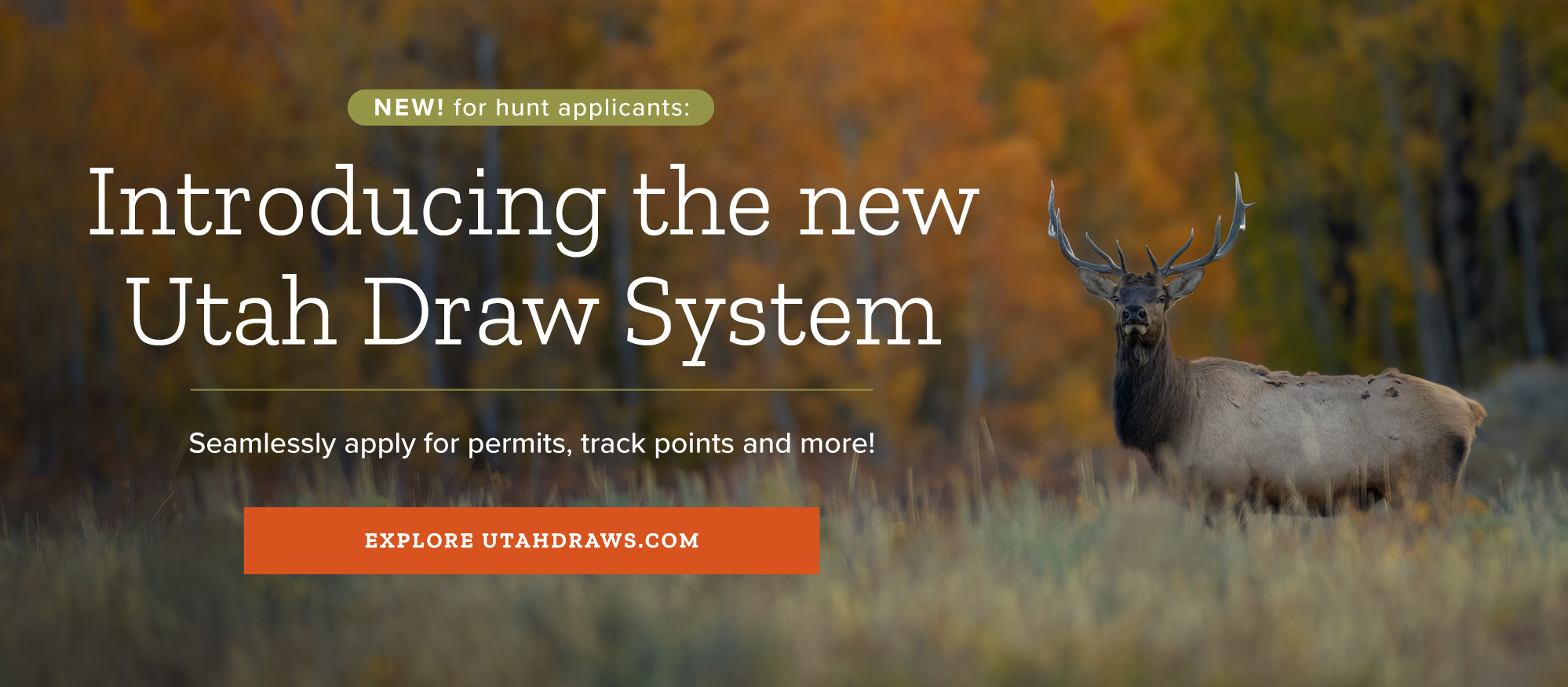Obtaining a golden eagle for falconry FAQ
Are you a master-class falconer who's interested in obtaining a golden eagle? This page contains common questions and answers from Utah falconers about the process; for definitive information, please see the Golden Eagle Allocation Procedure.
How many golden eagles are available each year for falconry purposes?
The number may vary from year to year, depending on availability, but up to six golden eagles may be distributed to falconers annually, nationwide. The potential recipients of the eagles are selected in a random drawing of qualified applicants.
What level of falconer can have a golden eagle?
In Utah, only master-class falconers with eagle endorsements are eligible to obtain golden eagles and use them for falconry purposes.
What are the requirements a master falconer must meet before they can obtain a golden eagle?
As part of the application process for obtaining a golden eagle, a master-class falconer must also obtain an eagle endorsement by providing all of the following:
- A written statement documenting their experience in handling large raptors, including information about the species handled and the type and duration of activities in which the experience was obtained.
- At least two letters of reference from individuals who are also experienced in handling or flying large raptors such as eagles, ferruginous hawks, northern goshawks or great horned owls, addressing:
- A concise history of the author's experience with large raptors, which can include — but is not limited to — handling of raptors held by zoos, rehabilitating large raptors or scientific studies involving large raptors.
- And the master-class falconer's ability to care for the species listed in R657-20.11(2)(b) and fly them in falconry.
How can I apply for the golden eagle distribution drawing?
If you are a Utah master-class falconer in good standing — and you are interested in applying for the national golden eagle drawing — please contact the Utah DWR Falconry Coordinator at This email address is being protected from spambots. You need JavaScript enabled to view it. no later than COB on Oct. 31 and provide your name, address, email, phone number and a copy of your eagle-endorsement letter.
When will I know if my name was drawn?
The drawing will be completed by Dec. 31 of each year. The first 10 people on the drawing list will be notified by the falconry coordinators of their respective state agencies early the following year. (Not everyone on the list will have the opportunity to receive an eagle, but having that many people allows for backups if falconers who are higher on the list choose not to accept an opportunity, for any particular reason.) The drawing order remains in place for one year, and will end when the next year's drawing order is finalized.
Where do the eagles come from?
There are two possible sources for golden eagles to be potentially allocated to falconers:
- Depredation area: Landowners and livestock operators with golden eagles that are preying heavily on their livestock can request that Wildlife Services certify their losses, and then apply for a U.S. Fish and Wildlife Service Eagle Depredation Permit to remove the eagles. To learn more about this process, see page 5 of the Golden Eagle Allocation Procedure document.
- Rehabilitation: These are golden eagles that have been recovering from injury at a migratory bird rehabilitation facility. To learn more about this process, see page 5 of the Golden Eagle Allocation Procedure document.
What happens if I am successful in the drawing?
If you are successful in the drawing — and you accept an opportunity to obtain a golden eagle — your falconry program lead will go one of two routes, depending on the source of the bird.
Depredation source
If the golden eagle is a depredating bird, your falconry program lead will put you in contact with the following individuals and agencies:
- The depredation permitee (a landowner or livestock operator)
- The Wildlife Services biologist over the depredation area
- The state wildlife agency that oversees the depredation area.
You will need to make arrangements with them to create and execute your trapping plan. You will be responsible for capturing the eagle, which may take some time.
Rehabilitation source
If the golden eagle is coming from a rehabilitation facility, your falconry program lead will put you in contact with the wildlife rehabilitator who has opted to allow a recovered bird to pass to a falconer.
Regardless of the source, you are responsible for knowing and following the requirements of the allocation process, the terms of the depredation or rehabilitation permit, any required health inspections, and all applicable state and federal laws.
What are the next steps if a golden eagle becomes available and my name is next on the list?
If the Utah DWR notifies you that a golden eagle opportunity is available, you will have five business days to accept the opportunity after receiving notice of its availability. If you do not respond to the DWR within five business days of the initial contact attempt, or you decline the offer, the eagle opportunity will be offered to the next falconer in the drawing order and your name will be moved to the bottom of the list. To learn more about this process, see pages 7–8 of the Golden Eagle Allocation Procedure document. Important: The eagles may be located anywhere in the country, so you will need to make arrangements for travel and be prepared to capture the eagle if it's a depredation situation.
Where can I learn more about the golden eagle distribution process?
The eagle distribution process is complex, involving both state and federal government agencies, private individuals and a variety of permit types. For more information about how the process works from beginning to end, see the Golden Eagle Allocation Procedure document.



















